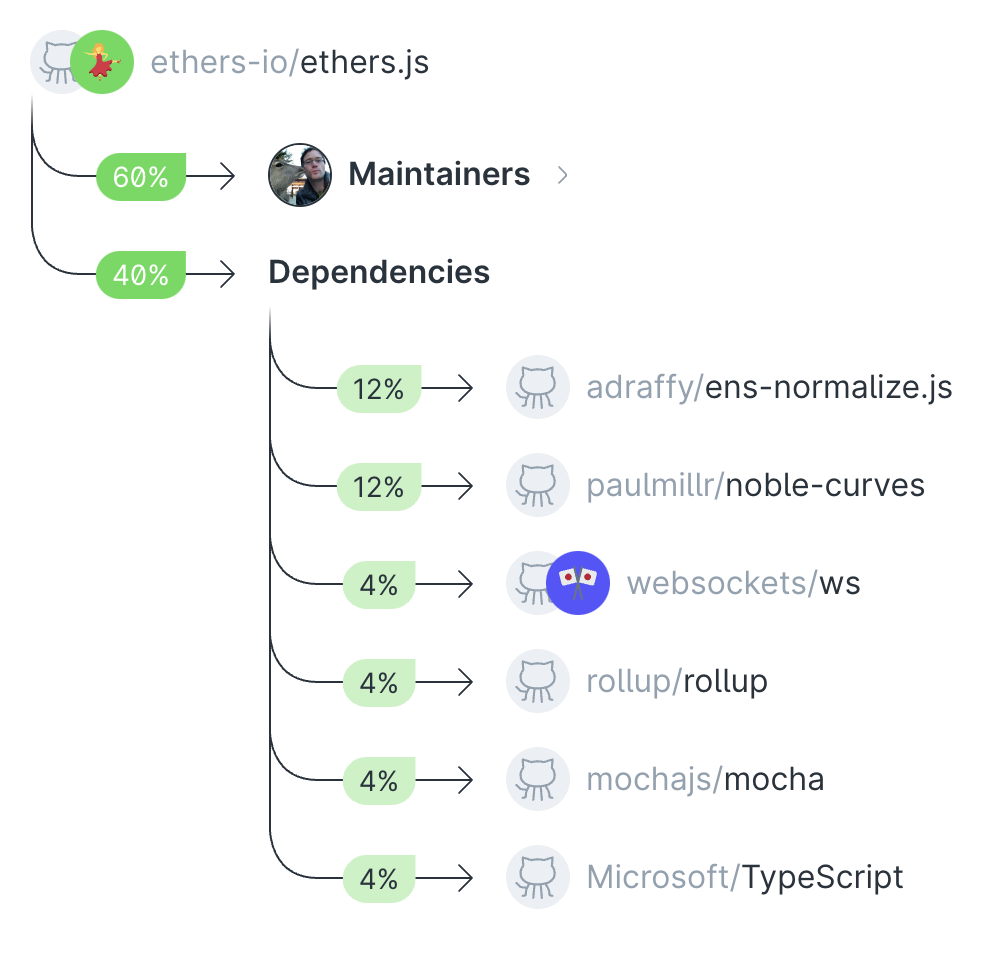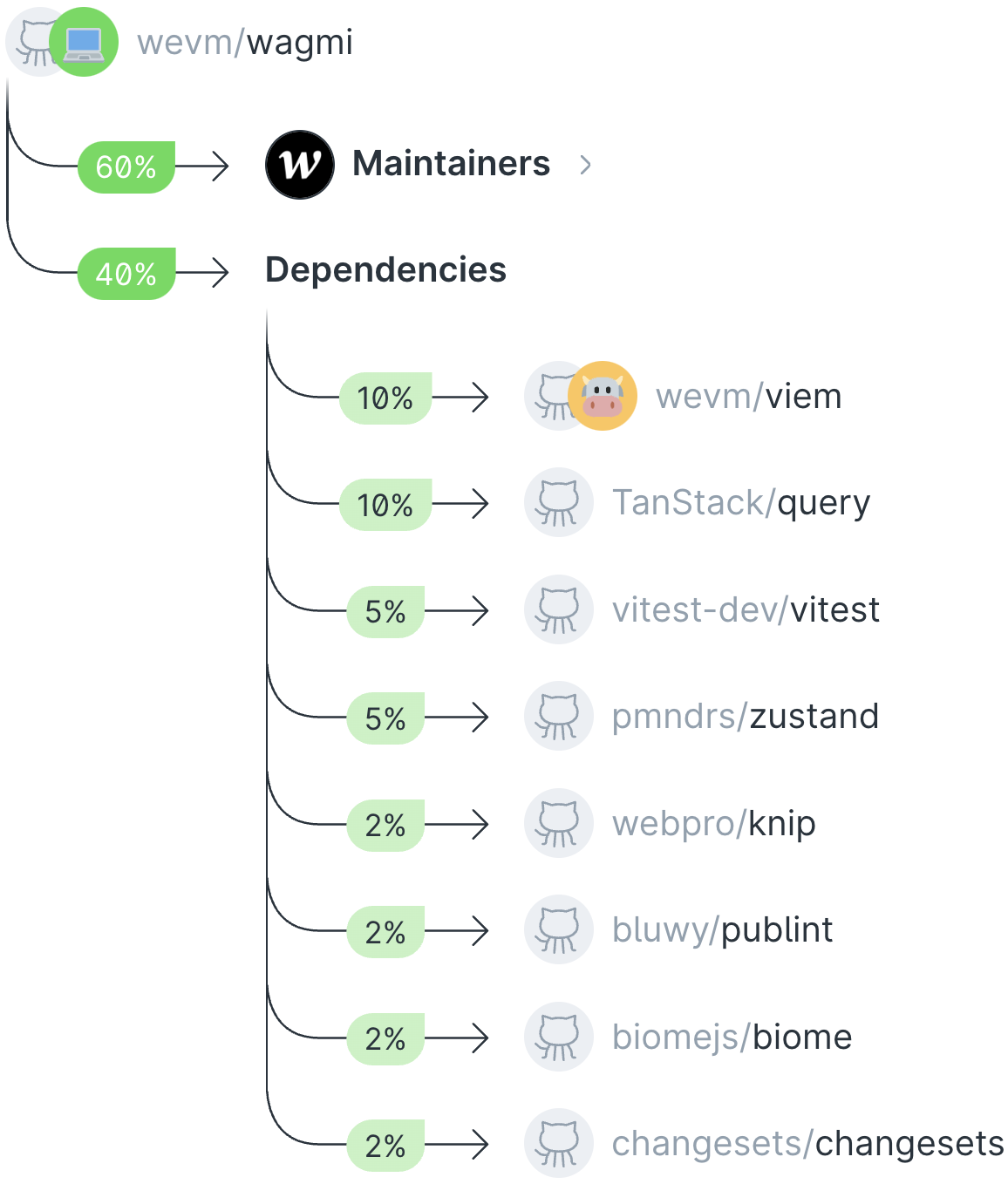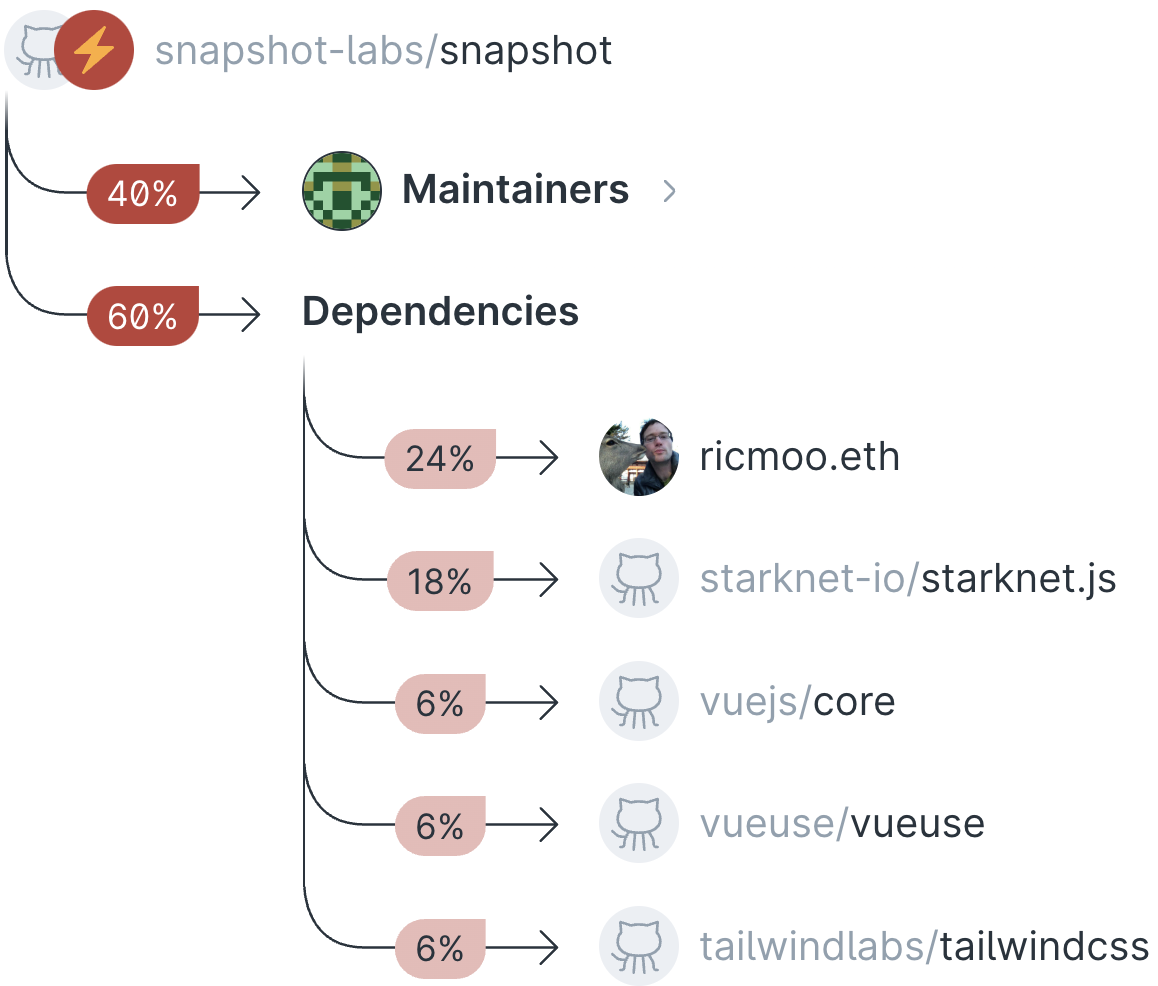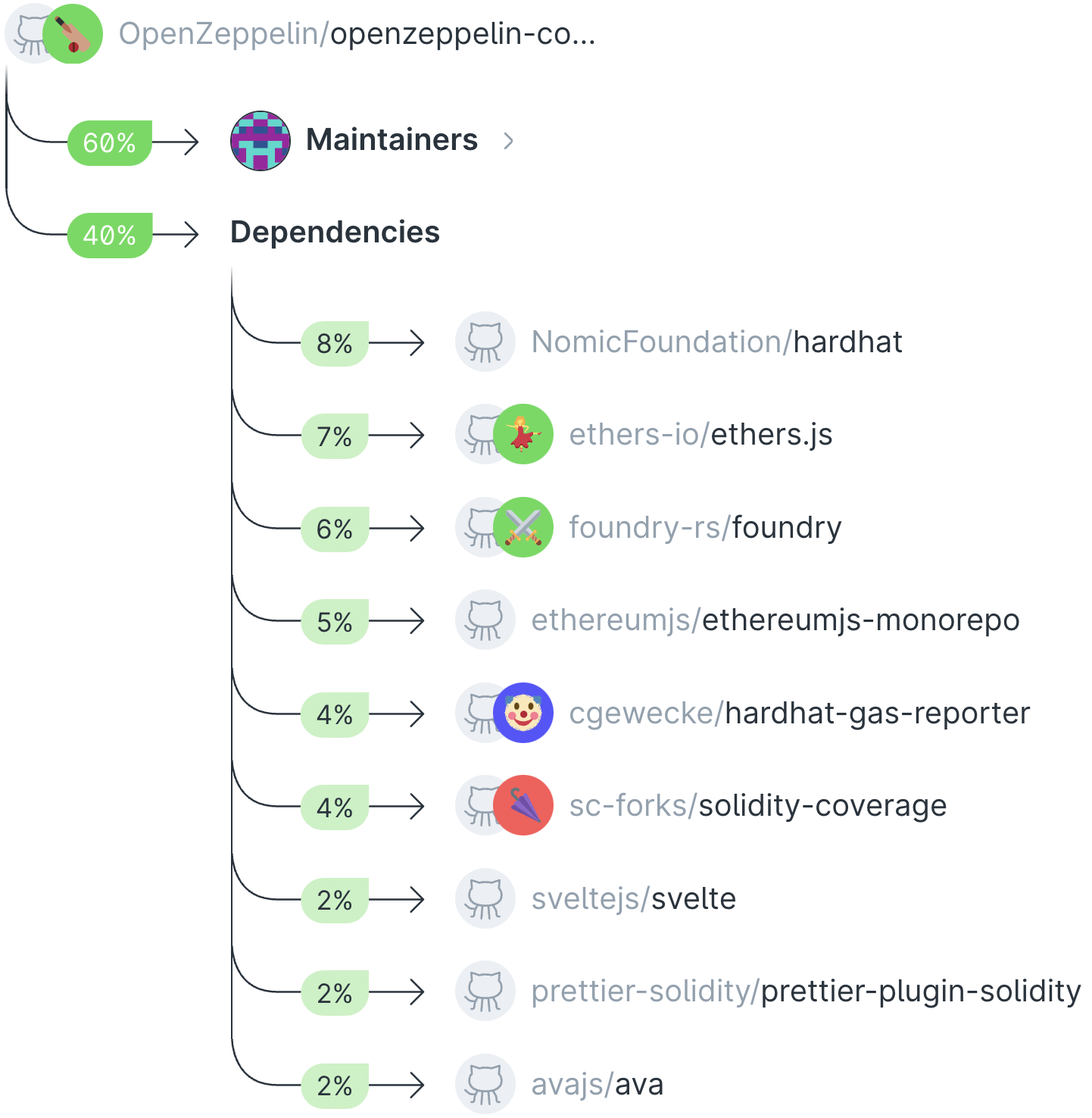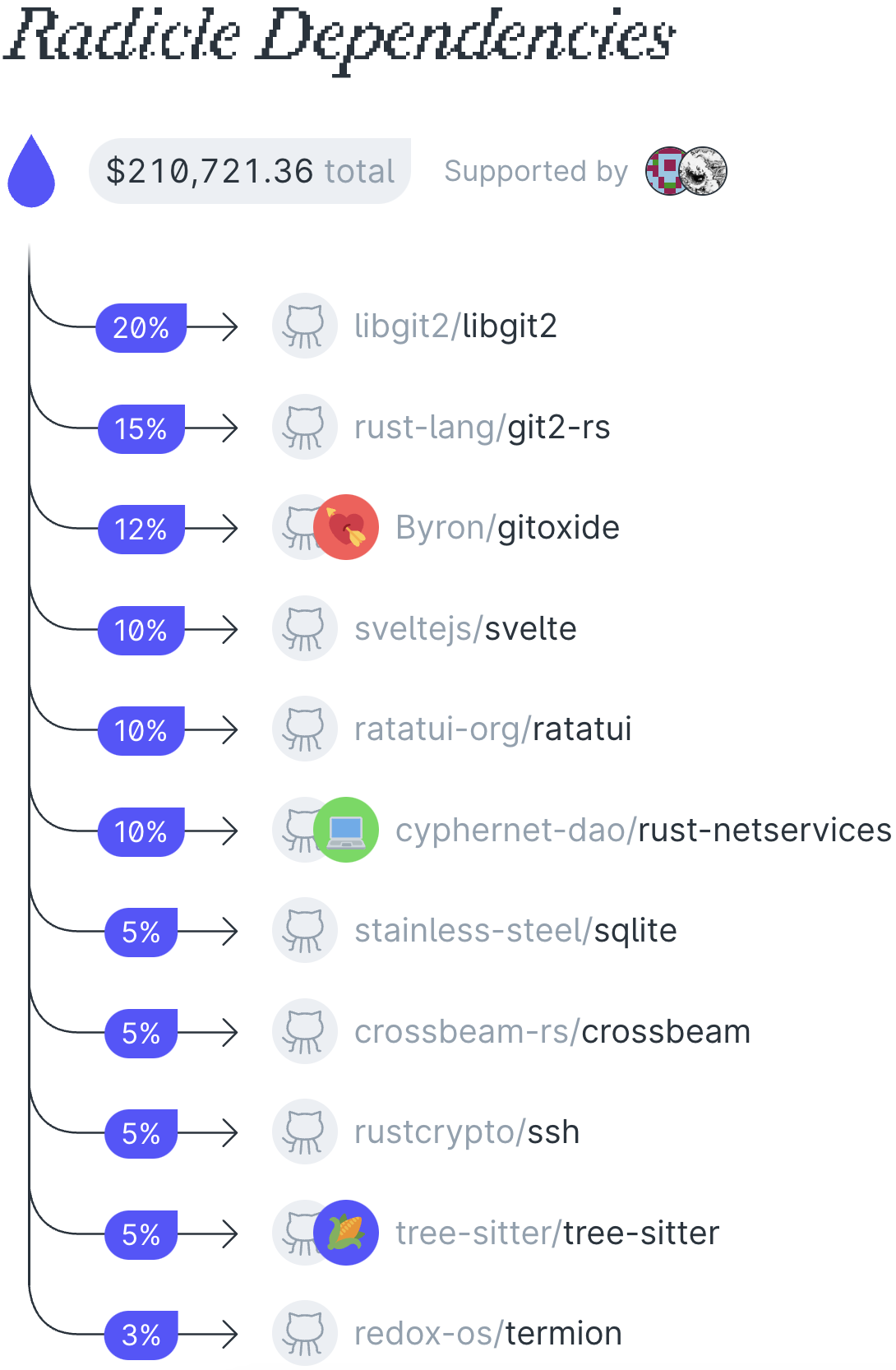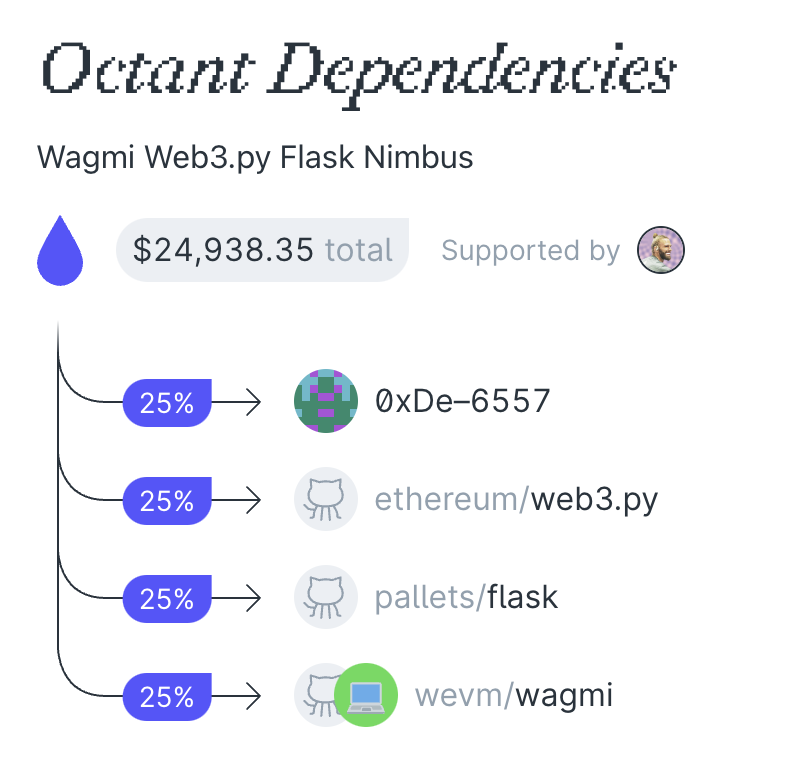As DAOs accumulate fees, revenue, or assets, its members choose a percentage to be continuously allocated to its critical software dependencies.
DAO members collaboratively curate a list (or many) of critical software dependencies that are impactful to their operations.
Decisions on modifying the list(s) or adjusting allocation percentages can be made dynamically via governance (onchain or offchain) based on changing priorities and needs.
As dependencies are onboarded to the system, they create their own lists for their dependencies. This creates a network of dependencies, a dependency graph, curated by people in real-time.
Every time capital flows through this dependency graph, it effectively cascades where it matters the most, organically flowing to the most impactful projects in an ecosystem.
